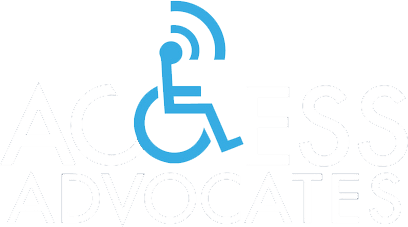 QUESTION:
QUESTION:
What is the difference between the ADA of 1990 and the ADA Amendments Act of 2008?
ANSWER:
It includes a better definition of disability, see below from 42 U.S. Code § 12102 – Definition of disability.
We at ACCESS always want to be sure your disability is an ADA disability so, per the language of the American’s With Disabilities Act, this is what we look at:
(1) The term “disability” means, with respect to an individual
(A) A physical or mental impairment that substantially limits one or more major life activities of such individual;
(B) A record of such an impairment; or
(C) Being regarded as having such an impairment
(2) Major Life Activities
(A) In general
A major life activities include, but are not limited to, caring for oneself, performing manual tasks, seeing, hearing, eating, sleeping, walking, standing, lifting, bending, speaking, breathing, learning, reading, concentrating, thinking, communicating, and working.
(B) Major bodily functions
A major life activity also includes the operation of a major bodily function, including but not limited to, functions of the immune system, normal cell growth, digestive, bowel, bladder, neurological, brain, respiratory, circulatory, endocrine, and reproductive functions.
(3) Regarded as having such impairment
(A) An individual meets the requirement of “being regarded as having such an impairment” if the individual establishes that he or she has been subjected to an action prohibited under this chapter because of an actual or perceived physical or mental impairment whether or not the impairment limits or is perceived to limit a major life activity.
(B) An impairment shall not apply to impairments that are transitory and minor. A transitory impairment is an impairment with an actual or expected duration of 6 months or less.

Access Advocates uses our ADA architectural skills honed over the last 20 years to help you get buildings ADA compliant, one building at a time. Our services are free to people with disabilities. We want to help you make a difference and get buildings ADA compliant.
Contact us today! Do you have a question for Hank, our ADA expert? Ask him here and he’ll send you a private, personal response.
Interested in learning more? Stay tuned for a series of new posts detailing the main differences between the ADA of 1990 and the ADA Amendments Act of 2008. We’ll be sharing this information over the course of the summer, so check back often!
